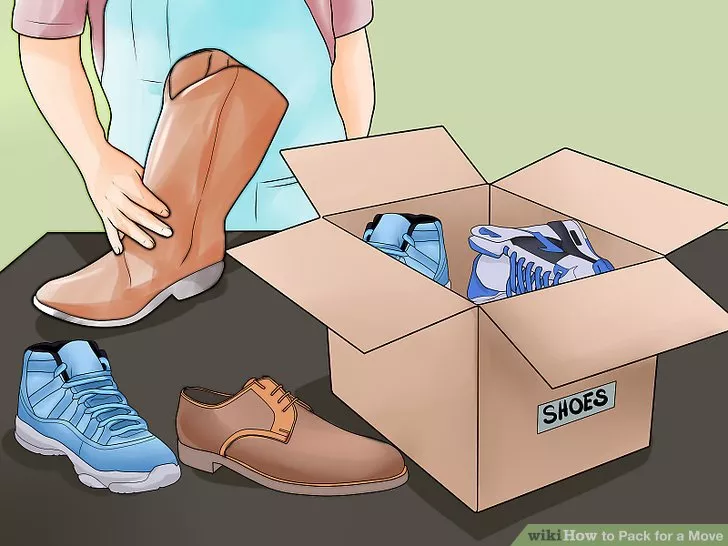When you are moving home, first you create a broad plan for moving that includes finalising the date of moving, fixing a removalist and readying the new home. Then you must pay attention to the finer details of moving like packing which plays a critical role to ensure safe moving.

If packing is not satisfactory, goods can get damaged in transit. Moreover, there must be a packing plan about which things to pack first because the process takes time and you have to maintain your home and normal activities even when packing is in progress.
The removalist knows very well how to pack items by considering its type, but you must provide a priority list to them so that there is minimal effect on normal life.
Finally, it boils down to taking a well-planned and systematic approach to packing and following the best techniques by using the right packing materials. After all, the packing must ensure that there is no damage to goods when moving from one place to another.
Taking a room by room approach will make things easy because each room is unique and pose issues and challenges that are unique too. The key to good packing depends on familiarisation with the type of item and its packing needs.
The kind of packing required for packing electronic items will be completely different from packing fragile items like drinking glasses and wine bottles.
Create a packing schedule
Like there is a story even before you start telling a story, for packing too, you must do some things before you start packing so that the process is smooth. To create a packing plan, you should have a list of items to pack with a clear understanding of the packing priority of each item.
Make a list of all things that you want to carry to the new home, know about its packing needs and mark its priority, meaning the date when you want to pack it. Prioritisation helps to ensure that despite packing some items, you can still carry out your normal activities.
Having a packing schedule ensures that you are aware which items will be available to you until the last moment of making a move. To achieve it, first pack the things that you least require and then leave the most wanted things for packing at the last moment.
Start early
Packing takes time, and the worst mistake is to hurry. When in a hurry, you might compromise with the quality of packing that can be disastrous as goods can get damaged. To ensure proper packing, line up all packing materials so that it is available near at hand and does not delay the process.
Therefore, create a schedule of packing dates and match it with the items to be packed so that you are aware of which items remain available for use on any specific date. This would ease a lot of pressure as it ensures that every item is packed correctly for complete protection.
The more organised is the packing, safer would be the move. For professional guidance in packing, visit Delco Removals, a leading removalist company in South Australia.
Pack room by room
Create a packing plan by taking one room at a time so that you avoid mixing items between the rooms. Again, within a room, choose items according to priority and not in a haphazard manner as it will upset your regular living.
Which room to pack first depends on the way you use the rooms and how important it is for you. Items that you would require much later like should be the first ones to pack. If you are moving in summer, you can pack the winter clothing first instead of trying to pack the tees and shorts first.
Declutter
Packing and decluttering go hand in hand. When you prepare a list of items for packing you must scrutinise the inventory carefully to judge which items you want to carry with you and which to discard.
This helps to generate a list of unused and obsolete items that you can dispose off or give for charity, depending on the nature of the item.
Decluttering not only leads to a cleaner home that is rid of stacks of unwanted items but also it reduces the load you carry which saves some cost in handling and transportation.
Label the boxes
Recognising the boxes after unloading and identifying its contents is important to ensure fast unpacking and quick setting up of the new home. After packing, label each box properly by sticking labels on its sides that contains the list of items within the box.
For easy identification of boxes according to the rooms, you can use different coloured labels like red for bedroom green for the kitchen, blue for the bathroom etc.
Do not forget to number the boxes so that you can count the total number of boxes and quickly identify if any goes missing during transit or is misplaced. Mark boxes of fragile items in red to alert people so that they take special care of it.
Do not overload
For ease of handling, do not use too large boxes that can be very inconvenient to handle thereby raising the risk of damage. Besides handling problems, large boxes would be too heavy which can lead to risky handling.
Limit the weight of the boxes so that it does not exceed 30 lbs which a person can comfortably handle without risking any damage from slipping or falling. Even if you are using large boxes, pack lighter items in it but never cross the line about the total weight of the box.
Have a separate box for essentials
Have a box earmarked for packing some essential items that you would need first when setting up home at the new place. Even if it is a small item like a pair of scissors or your office going items, put them in one package and mark it boldly.
Remember that you need to carry some items separately and not put in packing boxes like some heirlooms, legal documents, important papers and some other valuables.






